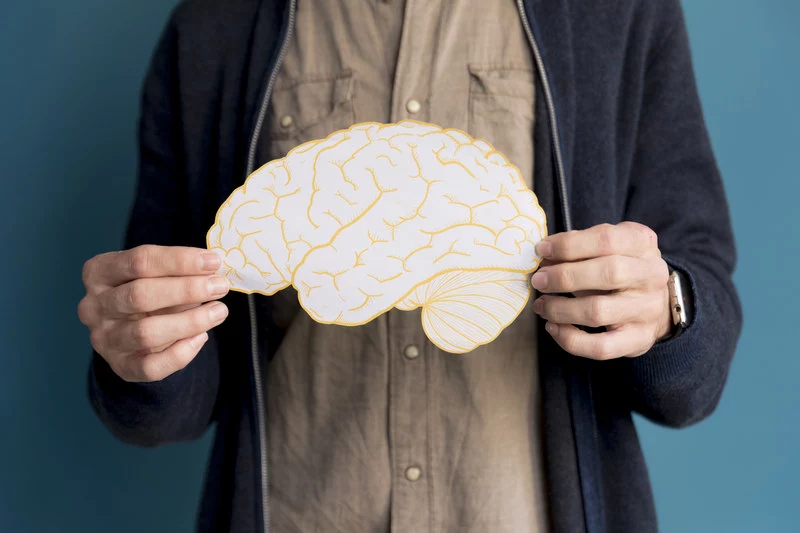In this article, you will learn more about these multiple factors influencing the number of TMS sessions required for different conditions, including depressive disorders. You’ll have a better understanding of how long sessions last and what to expect during your session so that you can make informed decisions about your treatment journey.

What is TMS?
Transcranial magnetic stimulation or TMS is a form of therapy that has developed over the last several years to provide acute treatment for successfully:
- Depression
- PTSD
- OCD
- Addictions
Transcranial magnetic stimulation utilizes magnetism and electricity to improve brain function and blood flow to the prefrontal cortex regions. While you might not be able to see it, the space around the magnet coil used during your sessions is magnetically active, and it creates a magnetic field.
By bringing that magnet near your brain, which conducts electricity, you can influence the electrical activity in specific parts of your brain by stimulating nerves and neurons.
This form of treatment is designed to step in where medications have failed in clients with significant needs, but it remains one part of a comprehensive treatment plan. Deciding how many sessions you need is something that should be done by your healthcare professional as you evaluate all other components of your comprehensive treatment.
A TMS session: What to expect?
How many TMS sessions do you need, and what does a session look like? With TMS, how many sessions are needed is highly individualized. However, you can expect to participate in an average of 15 to 40 sessions.
How long are TMS sessions? For many clients, sessions last 30 minutes. But figuring out how long a TMS session is for your first visit means accounting for the time it takes to familiarize yourself with the process and map your brain.
During your first session, you can expect to be introduced to the chair in which you’ll sit and the patented coil that will be used. The process will be explained to you so that you understand why your first session will be slightly different from the rest.
During the first session, your brain will be mapped so that each of your subsequent sessions can pinpoint the right area in your brain, but after that, sessions will be slightly shorter because you can dive right into your treatment.
Factors Influencing the Number of TMS Sessions
If you are wondering how many TMS sessions you’ll need, it’s important to understand that there are several factors that can influence the length of your treatment.
Individualized treatment plans
Firstly, this is a type of therapy that needs to be one part of a comprehensive treatment approach. Your psychiatrist or mental health professional will work with you to create a customized treatment plan based on your needs, and those needs could change over time. If progress is made with only a few sessions, you may not need to complete several months of TMS.
Meta-analyzes have confirmed that using TMS to send magnetic pulses into the prefrontal cortex sections of the brain works well as an acute antidepressant. It provides measurable clinical improvement with significant improvement. However, as it is noted to be an acute treatment, that means it is something that may or may not need to be used several times or with regularity, depending on your treatment plan and condition.
Conditions
How many sessions for TMS to work? This is also based on the type of condition you have. For major depressive disorder and other mood disorders, your psychiatrist might advise 30 sessions, one every day of the week for several weeks.

Symptoms
The severity of your symptoms and the treatment outcomes you want to achieve will also influence your decision. With TSM therapy, how many sessions you need long-term might include treatment once or twice per year or every few years. This is something that you should evaluate regularly based on the progress of your symptoms and your condition.
Professional assessment and ongoing evaluation
As mentioned, there are several factors that influence how many TMS sessions you need and even how long TMS sessions you complete. How many sessions for TMS to work might be as little as 5 or 10, but to provide long-term changes might be as high as 40. It’s essential that you receive ongoing evaluation and a professional assessment to adjust to your needs.
How Long Are TMS Sessions?
The same factors that determine how many sessions you need can determine how long your sessions are, as can the equipment being used. With our facility, our proprietary equipment provides shorter sessions with better penetration. Having shorter session lengths means you are able to find time to tolerate more sessions in the same amount of time.
Current Studies
Current studies have determined that TMS sessions can be beneficial as early as a few weeks into regular treatment and provide relief for depression symptoms. However, there are still many limitations in terms of what the optimal dosing schedule is, especially when incorporated into existing treatment plans that involve other therapy or medication.
Many extensive studies are ongoing and continue to provide new insight into the length of treatment sessions for individual conditions.
This means answering questions like “TMS therapy, how many sessions” is highly personalized and will likely change with continued research.
The Need for Professional Advice
This simply means that it’s essential to discuss treatment lengths with your psychiatrist as they would best apply to you and your circumstances. There is no single answer for all cases, nor is there a single answer for each type of condition.

Summary
So, how long is a TMS session? Generally, between 20 minutes and 50 minutes, but shorter sessions are more common. The magnetic pulses themselves last approximately 50 microseconds, but several pulses are used throughout a session.
With TMS, how many sessions you need is a highly personalized decision, one that should be decided upon with help from your psychiatrist. Consult with healthcare professionals to get specific recommendations before starting your treatment.
